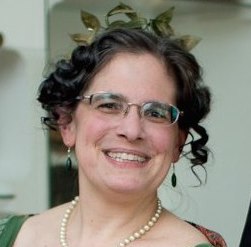An early anniversary gift for Michelle & Peter, who asked about 1910s schottisches:
By the 1910s, the schottische had almost complete vanished from the ballroom floor. But a few dancing masters were still creating variations, among them the “Pan-American Glide,” published in the F. Leslie Clendenen’s collection Dance Mad, or the Dances of the Day in St. Louis in 1914. It is attributed to F.W. Bouley.
The name of the dance does not signify anything special about it choreographically. It appears to merely be one of many uses of the term “Pan-American” in the early 20th century, playing off of the Pan American Union (so named in 1910) and the 1901 Pan-American Exposition in Buffalo.
For music, any schottische tempo tune or two-step is suggested. The couples start in closed ballroom hold, with their joined hands pointing along the line of dance. There are four parts to the dance, each taking one (4/4) bar of music and making a standard four-bar schottische sequence:
1. Slide left to the side, close right to first position. Repeat. (count 1-2-3-4)
2. Turning two-step once around. (count 1&2, 3&4)
3. Repeat first part (count 1-2-3-4)
(open out side by side facing line of dance)
4. Walk forward four steps (count 1-2-3-4)
At the end of the four walking steps, close up again to repeat from the beginning.
I’m not aware of any great popularity for this variation, and it’s quite possible that it was never done anywhere other than in Mr. Bouley’s lessons. But it makes a particularly easy sequence for beginners and allows for a bit of schottische mixed into the usual dances of the 1910s.

